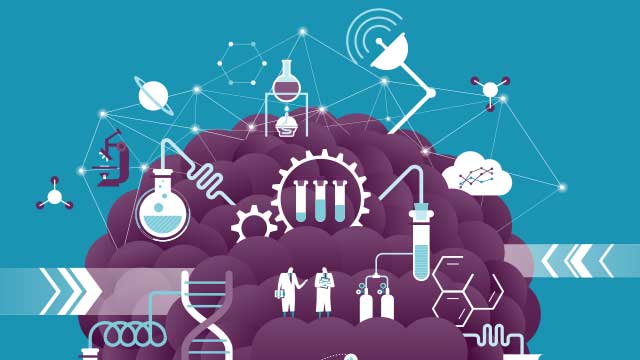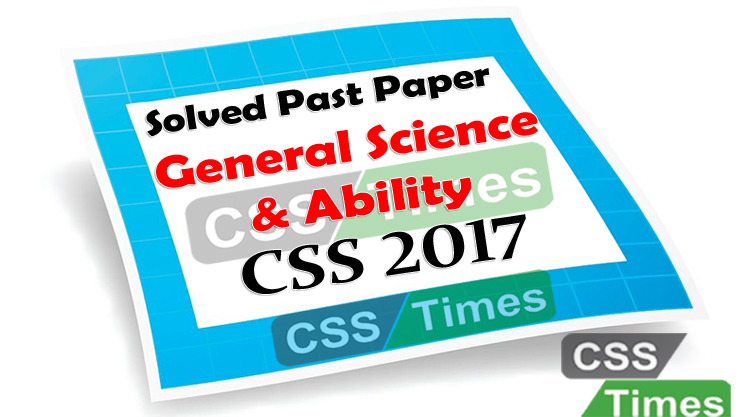1) The gas used for artificial ripening of green fruit is
(a) Ethylene
(b) Ethane
(c) Carbon dioxide
(d) Acetylene
Answer: (a)
Explanation: Ethylene (C2H4, also known as ethene) is a gaseous organic compound that is the simplest of the alkene chemical structures (alkenes contain a carbon-carbon double bond). Ethylene is the most commercially produced organic compound in the world and is used in many industrial applications. Ethylene is also a gaseous plant hormone.
Ethylene gas is used commercially to ripen tomatoes, bananas, pears, and a few other fruits postharvest. Ethylene can be explosive if it reaches high concentrations, so it has to be used cautiously. Several commercial liquid products release ethylene (ethephon, trade name Ethrel). These are only used preharvest. There are three main ways to produce ethylene: 1) gas from a cylinder, 2) catalytic generator, and 3) ethephon. Other sources of ethylene include ripening fruit, exhaust from internal combustion engines/heaters, smoke (including cigarettes), welding, rotting vegetation, natural gas leaks, and manufacturing plants of some kinds.
2) What is the Closest Planet to Earth?
(a) Mars
(b) Venus
(c) Mercury
(d) None of these
Answer: (b)
Explanation: When Venus lies between Earth and the Sun, it experiences what is known as an inferior conjunction. It is at this point that it makes its closest approach to Earth (and that of any planet) with an average distance of 41 million km (25,476,219 mi). On average, Venus achieves an inferior conjunction with Earth every 584 days.
And because of the decreasing eccentricity of Earth’s orbit, the minimum distances will become greater over the next tens of thousands of years
3) Sulfuric acid was prepared by?
(a) Johann Glauber
(b) Peregrine Phillips
(c) Jabir bin Hayyan
(d) None of these
Answer: (c)
Explanation: Jabir bin Hayyan was born in 721 A.D. in the Persian city of Tus. He gained excellence in the fields of Alchemy, Astronomy, Physics, Pharmacy, Philosophy, Astrology, and Geography. Jabir bin Hayyan prepared chemicals, discovered many acids, and prepared, as well as, improved many chemical processes. He stressed the significance of experimenting one’s theory, and this is why we see a lot of inventions and discoveries made by him. In fact, he was the one who introduced experimental techniques in the field of chemistry. He gave a detailed description of acetic acid, tartaric acid, and citric acid. Discovery of hydrochloric acid, sulphuric acid, and nitric acid are few of the greatest contributions made by Jabir bin Hayyan. He combined nitric acid with the hydrochloric acid and invented another acid termed today as “Aqua Regia”. The latter is strong enough to dissolve gold.
4) The name of the disease called Lock-jaw is?
(a) Arthritis
(b) Hypetropia
(c) Tetanus
(d) None of these
Answer: (c)
Explanation: Tetanus, commonly called lockjaw, is a bacterial disease that affects the nervous system. It is contracted through a cut or wound that becomes contaminated with tetanus bacteria. The bacteria can get in through deep puncture wounds or cuts like those made by nails or knives, but even a scratch provides an entryway. Tetanus bacteria are present worldwide and are commonly found in soil and most surfaces. The infection causes severe muscle spasms, leading to “locking” of the jaw, making it hard to open the mouth or swallow. In severe cases, tetanus infections may lead to death by suffocation. Tetanus is the only vaccine-preventable disease that is not transmitted from person to person
5) The longest and largest bone in the human body is
(a) Spinal Cord
(b) Humerus
(c) Fibula
(d) Femur
Answer: (d)
Explanation: The femur, or thigh bone, is the longest, heaviest, and strongest bone in the entire human body. All of the body’s weight is supported by the femurs during many activities, such as running, jumping, walking, and standing. Extreme forces also act upon the femur thanks to the strength of the muscles of the hip and thigh that act on the femur to move the leg.
6) The branch of physics which deals with the atomic nuclei is called?
(a) Nuclear physics
(b) Atomic physics
(c) Particle physics
(d) Modern physics
Answer: (a)
Explanation: While atomic physics deals with atoms as a whole, nuclear physics deals specifically with the nucleus of the atom. Physicists still need to understand the area around the nucleus, but they are more concerned with the forces at work keeping that nucleus together. Once they understand those forces, they often try to create new types of fusion and fission reactions.
7) Sonar is used to measure?
(a) The speed of sound
(b) Ocean depth
(c) Water properties of temperature
(d) None of these
Answer: (b)
Explanation: SONAR is a system that sends sound waves to locate objects under the surface of the water. SONAR stands for Sound Navigation and Ranging.
In most of the applications, we used light as the medium to transmit information from one place to another place because it travels large distance at high speed. However, light could not travel deep into the ocean. The sunlight entered into the water may travel only 200 meters into the ocean. Sound waves travel large distances in the water than light waves. Hence, sound waves are used to detect the objects in the ocean.
8) Stone used in whitewash:
(a) Claystone
(b) Stonelime
(c) Sandstone
(d) None of these
Answer: (b)
Explanation: The base material of white wash is a fat lime or shell lime. Fat lime which is also called stone-lime or white lime is high calcium lime with about 6 per cent material insoluble in acid, chiefly obtained by burning (called calcination) in a kiln pure limestone, chalk or sea shells, etc. (calcium carbonate).
9) Radar receives waves called:
(a) Electromagnetic Waves
(b) Mechanical waves
(c) Radio waves
(d) None of these
Answer: (c)
Explanation: The basics of radars is that a beam of energy, called radio waves, is emitted from an antenna. The radio waves used by radar are produced by a piece of equipment called a magnetron. Radio waves are similar to light waves: they travel at the same speed—but their waves are much longer and have much lower frequencies. Light waves have wavelengths of about 500 nanometers (500 billionths of a meter, which is about 100–200 times thinner than a human hair), whereas the radio waves used by radar typically range from about a few centimeters to a meter—the length of a finger to the length of your arm—or roughly a million times longer than light waves.
10) Plaster of Paris is obtained from:
(a) Brochantite
(b) Gypsum
(c) Chalcanthite
(d) None of these
Answer: (b)
Explanation: Plaster of Paris is created by heating gypsum crystals, a soft mineral made of calcium sulphate dihydrate, to turn them into a dry powder. When it is mixed with water it reforms into a gypsum paste which is used as a building material for wall surfacing and fireproofing, or for creating sculptures and other art works.
A chemical reaction occurs when the water is added to the dry plaster, in some cases reaching temperatures of up to up to 302F (150C), capable of causing serious injury.
The name plaster of Paris derives from the huge gypsum deposit at Montmartre, north Paris.
It was used to create some of the most important art works of the Renaissance period, including Michelangelo’s Sistine Chapel ceiling, which was painted on a thin layer of wet plaster of Paris
Plaster of Paris has been illegally used by some boxers in their hand-wraps under their gloves to harden their punches
11) Phosphorus helps plant growth of:
(a) Leaves
(b) Seeds
(c) Root
(d) None of these
Answer: (c)
Explanation: Each root tip uses phosphorus as a stimulating agent to grow deep and wide in search of moisture, nutrients and air. As phosphorus helps the roots grow, it also encourages mineral and moisture absorption throughout the root lengths. However, phosphorus itself is not easily absorbed by the roots — your plants readily absorb phosphate ions from rock phosphate or added fertilizer. Along with vigorous root growth, phosphorus strengthens the overall plant when it comes to environmental changes, especially for emerging seedlings — the plant acclimates quickly to temperature swings and soil pH value changes.
12) The blue color of sky is due to:
(a) Rayleigh scattering
(b) Mie scattering
(c) Sky Saturation
(d) None of these
Answer: (a)
Explanation: The blue color of the sky is caused by the scattering of sunlight off the molecules of the atmosphere. This scattering, called Rayleigh scattering, is more effective at short wavelengths (the blue end of the visible spectrum). Therefore the light scattered down to the earth at a large angle with respect to the direction of the sun’s light is predominantly in the blue end of the spectrum. Rayleigh scattering refers to the scattering of light off of the molecules of the air, and can be extended to scattering from particles up to about a tenth of the wavelength of the light. It is Rayleigh scattering off the molecules of the air which gives us the blue sky. Lord Rayleigh calculated the scattered intensity from dipole scatterers much smaller than the wavelength to be:
Rayleigh scattering can be considered to be elastic scattering since the photon energies of the scattered photons is not changed. Scattering in which the scattered photons have either a higher or lower photon energy is called Raman scattering. Usually this kind of scattering involves exciting some vibrational mode of the molecules, giving a lower scattered photon energy, or scattering off an excited vibrational state of a molecule which adds its vibrational energy to the incident photon.
13) Newspaper can be recycled:
(a) 5 to 7 times
(b) 5 times
(c) 4 times
(d) None of these
Answer: (b)
Explanation: Some industry sources estimate that an ordinary sheet of paper made from cellulose fibers derived from wood can survive only four to six trips through the recycling process. The paper is shredded and chopped, then subjected to a mixture of chemicals and water and heated as it is repulped. It is centrifuged and screened to remove impurities; de-inked with more chemicals; then sprayed onto a wire screen, drained, dried and squeezed through heated rollers. With each step, the fibers become shorter, coarser and stiffer, so that eventually, recycled fiber needs to be mixed with virgin fiber to make paper of the desired quality.
14) Blood clotting happens in which part of human body?
(a) Veins
(b) Heart
(c) Brain
(d) None of these
Answer: (a)
Explanation: A blood clot is a gel-like mass formed by platelets and fibrin in the blood to stop bleeding. When blood clots form inappropriately inside an artery or vein, they may cause significant problems because blood flow past the clot is decreased.
15) Lens used to correct short sightedness:
(a) Concave polygon
(b) Concave
(c) Concave mirror
(d) None of these
Answer: (b)
Explanation: Someone with short-sightedness can see near objects clearly, but cannot focus properly on distant objects. This is caused by the eyeball being elongated, so that the distance between the lens and the retina is too great. It can be corrected by placing a concave lens in front of the eye.
16) Catalyst to convert oil into ghee:
(a) Nickel
(b) aluminium isopropoxide
(c) phosphonium borate
(d) None of these
Answer: (a)
Explanation: The transition metal nickel is used in the hydrogenation of vegetable oils to make margarines and soft-spreads.
Hydrogenation means adding hydrogen to a substance.
Liquid vegetable oils that are unsaturated will react with hydrogen
at about 60 °C in the presence of a nickel catalyst.
This is an example of an addition reaction where hydrogen adds across the double bond leaving only single bonds.
The picture below shows hydrogenation of a double bond.
Hydrogenation raises the melting point above room temperature and makes the liquid oil become solid in a process called hardening.The solid product is used as a margarine or spread.
17) Conversion of oil into ghee:
(a) Crystallisation
(b) Hydrogenation
(c) Oxidation
(d) None of these
Answer: (b)
Explanation: A chemical process called hydrogenation changes vegetable oil Vegetable oil into solid fat (Banaspati ghee). When hydrogen is passed through combines with hydrogen and vegetable oil in the presence of nickel, it converts into solid fat. Converts into solid fat or ghee.
This process is called hydrogenation. Vegetable oil is liquid while fat (ghee) is solid at room temperature. A large amount of heat is used to bring about this chemical change.
18) In a certain code language COMPUTER is written as RFUVQNPC. How will MEDICINE be written in code language?
(a) MFEDJJOE.
(b) EOJDEJFM
(c) MFEJDJOE
(d) EOJDJEFM
Answer: (d)
Explanation: – There are 8 letters in the word.
– The coded word can be obtained by taking the immediately following letters of word, expect the first and the last letters of the given word but in the reverse order. That means, in the coded form the first and the last letters have been interchanged while the remaining letters are coded by taking their immediate next letters in the reverse order.
19) A man walks 2 km towards North. Then he turns to East and walks 10 km. After this he turns to North and walks 3 km. Again he turns towards East and walks 2 km. How far is he from the starting point?
(a) 10
(b) 13
(c) 15
(d) None of these
Answer: (b)
20) A told B that C is his father’s nephew. D is A’s cousin but not the brother of C. What relationship is there between D and C ?
(a) Father
(b) Brother & Sister
(c) Mother
(d) Aunt
Answer: (b)
Explanation: A has two cousins C and D. Since C is male so D must be female (according to the data) and both are the nephew and niece of A’s father.
21) It takes Ali 30 minutes to mark a paper. Aslam only needs 25 minutes to mark a paper. If they both start marking papers at 11: 00 AM, at what time they will finish marking at the same time.
(a) 12:30
(b) 12:45
(c) 1:30
(d) 12:25
Answer: (c)
Explanation: Question clearly asking about LCM.
so LCM of 25 and 30 is 150 minute so
Answer is 2:30 hour and it mean 1:30 PM
Section – II
Q.6 (A) Differentiate with examples between a “Pictogram” and “Histogram”.
Histogram
A histogram looks similar to a bar chart, but in this case the area of the bar or rectangle varies with the data, rather than just the length
When to use a histogram
• It can only be used to represent continuous data.
• It can represent data expressed as actual numbers, percentages and frequencies.
• It is really only of value if the reader gets more information from a chart where the classes are different sizes.
Pictogram
A pictogram uses pictures or symbols to represent a number of units of data. The pictures usually relate to the data shown
When to use a pictogram:
• These can be some of the most visually appealing diagrams to use.
• They are often used as part of advertising campaigns.
• Make sure that it is appropriate for your needs, don’t let the medium get in the way of the message. It can be tempting to use pretty pictures but these may make the information less clear; they may also trivialize the topic.
• It is not always suitable for large quantities of data. You do not necessarily need one picture per piece of data (in the diagram above, one picture represents two pets). However, you may still need to show smaller quantities (eg half a picture represents one pet) and it may be hard to read if divided further.
• Some pictograms can vary the size of the symbols rather than the number. Do not use this, unless you are confident. It should be the area of the picture that increases in proportion to the frequencies rather than the length, otherwise this can be misleading.
Q.7 (B) It takes Ali 30 mint to make a paper .Aslam only need 25 minute to make a paper. If they both start marking paper at 11:00 AM, What is first time they will finish marking a paper at same time?
(a) 12:30
(b) 12:45
(c) 1:30
(d) 12:25
Answer (c)
Explanation: Question clearly asking about LCM. so LCM of 25 and 30 is 150 minute so
Q.7 (D) A told B that C is his father’s nephew. D is A’s cousin but not the brother of C. What relationship is there between D and C ?
(a) Father
(b) Brother & Sister
(c) Mother
(d) Aunt
Answer: (b)
Explanation : A has two cousins C and D. Since C is male so D must be female (according to the data) and both are the nephew and niece of A’s father.
Q.8 (C) A man walks 2 km towards North. Then he turns to East and walks 10 km. After this he turns to North and walks 3 km. Again he turns towards East and walks 2 km. How far is he from the starting point?
(a) 10 km
(b) 13 km
(c) 15 km
(d) None of these
Answer: (c)
Q.8 (D) In a certain code language COMPUTER is written as RFUVQNPC. How will MEDICINE be written in that code language?
(a) MFEDJJOE
(b) EOJDEJFM
(c) MFEJDJOE
(d) EOJDJEFM
Answer (d)
Explanation: The letters of the word are written in reverse order and expect the
first and the last letter all other letters are move one step forward




